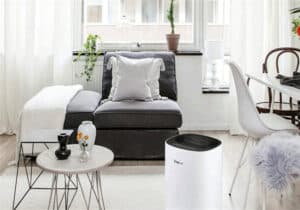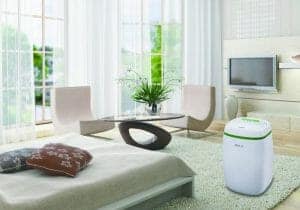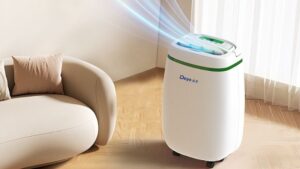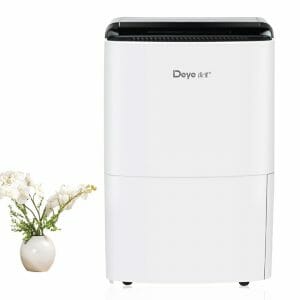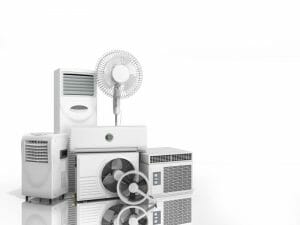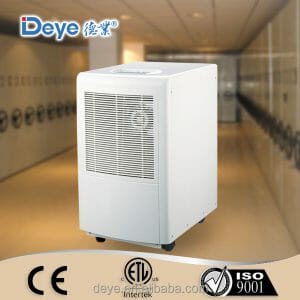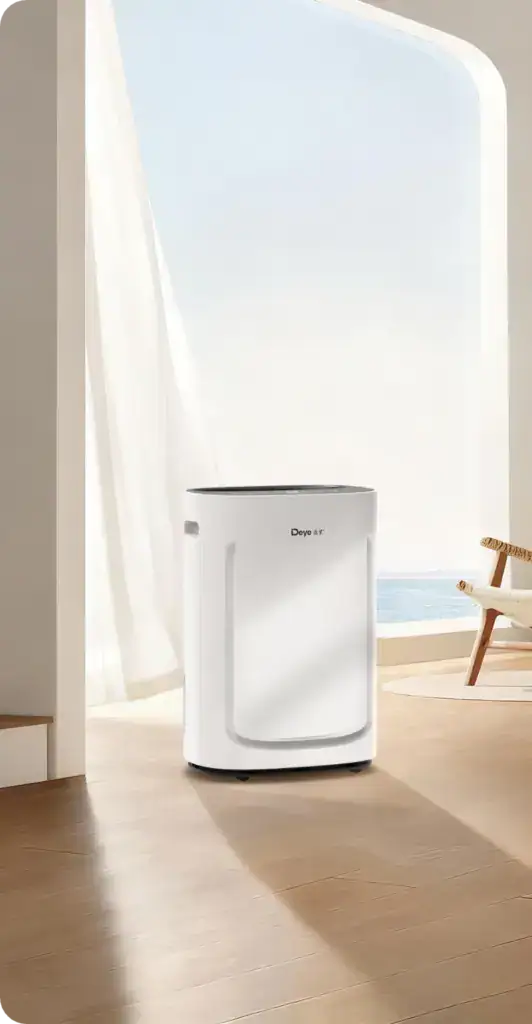Before purchasing a dehumidifier, it’s a good idea to inspect your crawl area. This is because, while a dehumidifier can solve most moisture-related issues, it has its limitations. This will keep you from investing in one when you have more pressing matters to address.
Crawl areas are usually dimly lit and wet. Mold and mildew thrive in these types of environments. It’s also prone to attracting insects like termites, dust mites, and other pests that can wreak havoc on your house’s foundation.
Consider purchasing under house dehumidifier if you discover the following issues while inspecting your crawl area.
- Mold is visible.
- Insects such as termites and dust mites are present.
- Because of the high humidity levels, the air feels stifling.
- Moisture dripping from pipes in your home’s HVAC (Heating, Ventilation, and Air Conditioning) system, such as condensation pipes.
- Collection of water puddles.
- Wood rotting and swelling.
- Floorboards that sag.
Choosing the Correct Dehumidifier
Once you’ve assessed your crawl space and decided to purchase a dehumidifier, you’ll need to choose which model is best for the job. A poor investment at this point may result in more costs in the future.
Crawl space has a higher moisture content than most other house regions. This is because they were not intended to withstand high humidity levels. As a result, you will need a dehumidifier explicitly made for crawl spaces.
A dehumidifier for the entire house or basement might work, but it won’t be as effective. Crawl space variants are also tiny, enabling installation in restricted areas. Most brands include “Crawl Space” in their names, so distinguishing them from the rest won’t be tough.
When purchasing under-house dehumidifiers or any other sort of dehumidifier, two key features are “operational capacity” and “area of coverage.” The “operational capacity” of a dehumidifier refers to how much water it can remove from the air in 24 hours.
PPD is the most common unit of measurement (Pints Per Day). Similarly, the “area coverage” indicates the device’s operational range and is usually stated in square feet.
Crawl space models are more expensive than other variants, ranging from $700 to $1,500. These versions have an operational capacity ranging from 50 to 90 PPD.
They can remove water from areas as large as 1,500 to 2,000 square feet. Around $1,100 will get you a machine with a built-in condensation pump.
The Cost of Installation and the Method
The first step is to find the correct under-house dehumidifier. The next step is to decide how it will be installed. Instead of a reservoir tank, a dehumidifier with its drainage system is preferable.
Another method is to connect the dehumidifier’s output to the outflow of your HVAC system. This will keep you from emptying the tank every time it gets full.
You can hire a contractor or do it yourself to install a dehumidifier. If you decide to hire a contractor, the installation cost will vary depending on the company or persons you choose. A contractor typically charges between $300 and $700, depending on the system’s complexity.
Some systems will even necessitate hiring an electrician, which will cost around $60 per hour. However, most contractors nowadays now include electrical work.
A complete dehumidifier system takes around 3 to 7 hours to install. The overall cost usually includes the dehumidifier’s setup, location, drainage options, and necessary electrical work.
However, if you are confident, you can complete the task yourself. Some dehumidifiers for the home are simple to set up and do not require hiring. This will save you money on labor but require you to purchase the necessary tools and equipment.
You may need the following essential tools and supplies during the installation process.
- A set of drill bits and an electric drill
- Nails, hammers, and screwdrivers
- PVC tubes
- Rubber hoses
- Metal clamps and straps
- Blocks of concrete (only if a platform is required because some dehumidifiers can be hung).
There are various advantages to installing the under-house dehumidifier in your space. Here are the top five benefits:
Health Protection
When you use a dehumidifier in your crawl space or basement to enhance the air quality in your home, you’re helping to safeguard your health. If your home has too much humidity, it becomes a breeding ground for dust mites and mold.
You may reduce moisture in the air and improve air quality in your crawl area by using an under-house dehumidifier. Improving indoor air quality through moisture control can help decrease allergy symptoms like eye discomfort, headaches, and respiratory problems.
Protection Against Pests
Pest infestations inflict more damage to homes than storms and fires combined. Therefore controlling the moisture in the air can help.
You’re safeguarding your health and protecting yourself from pests if you can control the humidity in your encased crawl area using a dehumidifier.
Boost House Structural Stability
If the relative humidity in your crawl space is more than 70%, condensation will almost certainly form, increasing the risk of wood rot.
Comfortable Living Space
Humidity levels above 50% can make you and your family feel hot and sticky, reducing the comfort level in your environment. You become cold and clammy if you lower the temperature of the air conditioning unit to remove the humidity.
You can adjust the humidity levels in your home by installing under house dehumidifier, ensuring that you and your family are always comfortable.
Furthermore, installing a dehumidifier in your crawl space will allow you to feel more comfortable at a warmer temperature, saving you money on energy.
Energy Conservation
If your first instinct is to switch on the air conditioner to remove the excess humidity in your home, you’ll unintentionally raise your energy bill because more air equals more electricity.
Instead of turning up your air conditioner, install a dehumidifier in your crawl space to keep relative humidity levels at or below the required 60% in the spring, summer, and fall.
We are wholesale manufacturers of various high-quality dehumidifiers. For more information, please fill out the contact form below,

